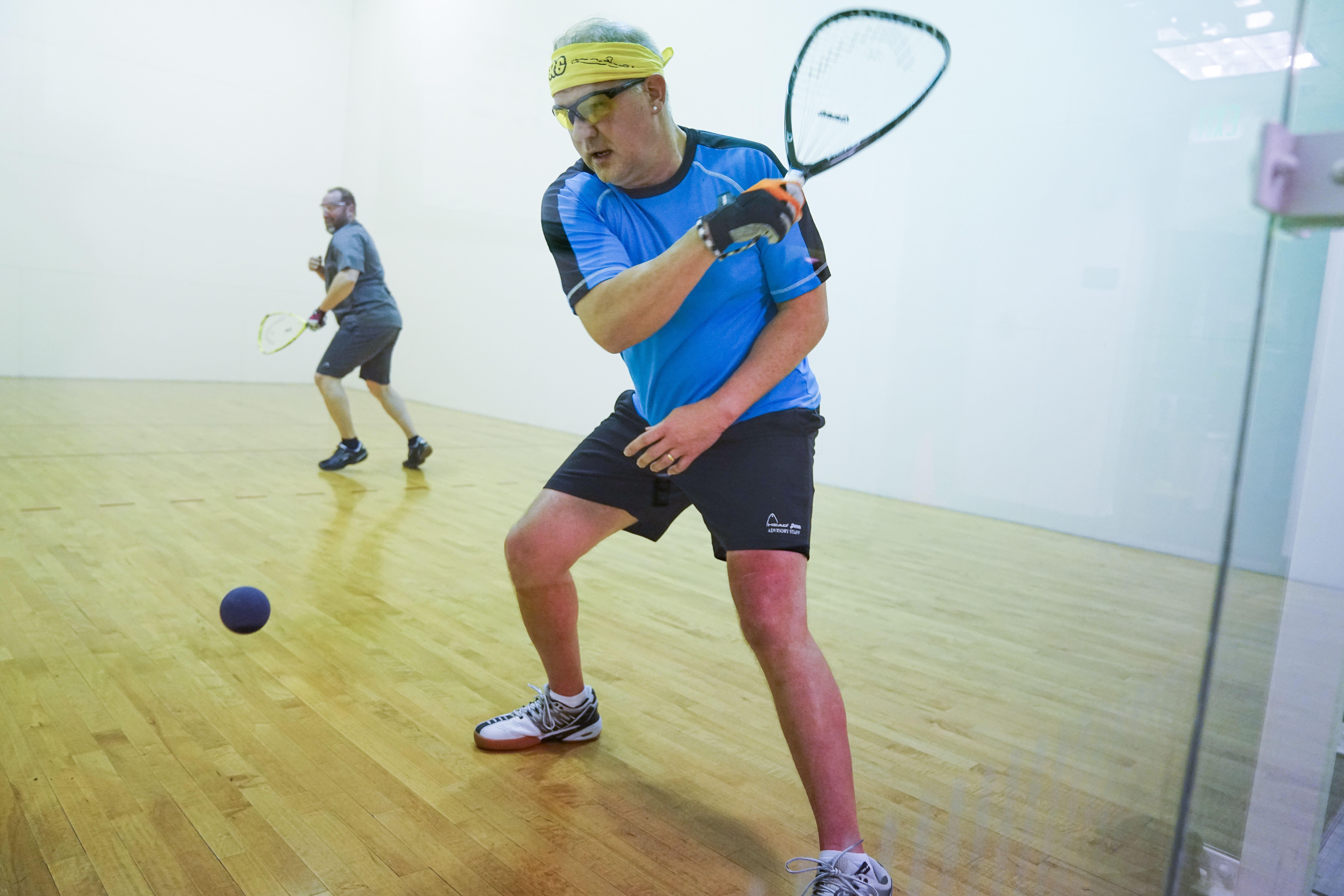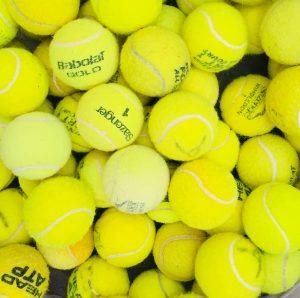We may earn money or products from the companies mentioned in this post.
A Quick Summary

Tennis is a sport that requires precision, strategy, and skill and has a unique scoring system. Tiebreakers are an important part of modern-day tennis, providing an exciting and efficient way to break ties between players in close matches. There are two types of tiebreakers, and strategies for playing in a tiebreaker situation include maintaining a high first serve percentage, being aggressive during critical moments, staying mentally tough and focused, and adapting to changing dynamics.
Beyond Love: A Brief Overview of the Tennis Scoring System

Tennis is a sport that requires precision, strategy, and skill But what makes it different from other sports is its unique scoring system Unlike most games where points are counted in whole numbers, tennis uses a more complex system that involves fractions and peculiar terminology
The Basics of Tennis Scoring
For those who are new to tennis, here’s how the scoring goes: each game consists of four points – 15, 30, 40 and game point The first player to win four points wins the game However, if both players reach deuce (a tie at 40-40), they must win by two consecutive points This can go on indefinitely until someone breaks the tie
In addition to games, matches in tennis are also divided into sets To win a set, a player must be the first to win six games with a margin of two or more games over their opponent If the set score reaches 6-6, a tiebreaker is played to determine the winner
The Importance of Tiebreakers
Tiebreakers have become an essential part of modern-day tennis as they provide an exciting and efficient way to break ties between players in close matches Introduced in the late 1960s by James Van Alen, tiebreakers have revolutionized the way we watch tennis today
Not only do they make matches more entertaining by adding extra drama and tension during crucial moments but they also make scheduling easier for tournament organizers as it eliminates the need for long drawn-out matches that can last for hours on end
Furthermore, tiebreakers serve as great equalizers in tennis as they give underdogs a chance to level up against stronger opponents without having to win by a large margin This makes matches more competitive and exciting for fans as they get to witness upsets and comebacks that would have been impossible with the old scoring system
Overall, the tennis scoring system may seem complicated at first, but it adds a unique element of excitement and strategy to the game And with tiebreakers playing an increasingly important role in modern-day tennis, we can expect even more thrilling moments on the court in years to come
| Key Point | Description |
|---|---|
| Tennis Scoring System | The unique scoring system adds excitement and strategy to the game |
| Importance of Tiebreakers | Tiebreakers make matches more entertaining, competitive, and easier to schedule |
| Upsets and Comebacks | The current scoring system allows for thrilling upsets and comebacks |
of the topic, just focus on the Tiebreaker rules and procedures
Understanding the Tiebreaker Rules and Procedures in Tennis

When a tiebreaker is played
One of the most exciting moments in a tennis match is when a tiebreaker is played This happens when both players have won six games each in a set, resulting in a 6-6 score In most tournaments, including Grand Slams, a tiebreaker is played to determine the winner of that set However, there are exceptions for final sets where players continue to play until one has two games more than the other
The structure of the tiebreaker
The structure of a tiebreaker can be confusing for those who are new to tennis The first player to reach seven points with at least two points more than their opponent wins the tiebreaker and ultimately, the set Players alternate serving two points each starting from the second point (the first server serves only once). After every six points played, players switch sides of the court to ensure fairness
The key strategy during a tiebreaker is to maintain focus and consistency while also taking calculated risks when necessary A single mistake can cost an entire set, so it’s important for players to stay composed under pressure and make smart decisions throughout
Overall, understanding these tiebreaker rules and procedures is essential for any tennis fan or player looking to improve their game knowledge With this knowledge in mind, you can now follow along with greater confidence as your favorite players battle it out on court
| Key Point | Description |
|---|---|
| 1. Focus | Maintain focus and consistency during a tiebreaker to minimize errors |
| 2. Risks | Take calculated risks when necessary, but make smart decisions overall |
| 3. Knowledge | Understanding tiebreaker rules is essential for tennis fans/players to improve game knowledge |
Exploring the Different Types of Tiebreakers in Tennis

The Traditional (7-point) Tiebreaker or “Coman” Tiebreak
The traditional tiebreaker, also known as the Coman tiebreak, is a method used to determine a winner when two players have tied in sets This type of tiebreaker is played up to seven points, with players taking turns serving two points at a time The first player to score seven points with a lead of two or more points wins the set
One advantage of the 7-point tiebreaker is that it provides an exciting conclusion to a close match It allows both players an equal chance to win and keeps the game moving along without dragging out for too long
The Championship (10-point) Tiebreaker or “Super” Tiebreak
The championship tiebreaker, also known as the Super tiebreak, is another way to determine a winner in tennis matches This format is typically used in place of a final set and is played up to ten points, instead of seven
In this type of tiebreaker, players take turns serving every point until one player reaches ten points with a lead of two or more points The Super tiebreak has become increasingly popular due to its ability to provide quick and exciting finishes to matches
Used in Place of Final Set
Both types of tiebreakers are used in place of final sets in some competitions and formats For instance, Grand Slam tournaments use different versions of these tiebreakers depending on the type of competition
While some purists prefer playing out final sets without using any form of tiebreaker, most players and fans appreciate having an organized method for determining winners when matches are tied after several sets
In conclusion, tennis enthusiasts can enjoy watching matches that utilize either traditional or championship-style tiebreakers Both methods offer their unique advantages and add excitement to the game
| Key Point | Traditional (7-point) Tiebreaker | Championship (10-point) Tiebreaker |
|---|---|---|
| Purpose | Determine a winner in tied sets | Determine a winner in final sets |
| Points | Played up to 7 points | Played up to 10 points |
| Popularity | Commonly used | Gaining popularity |
Strategies for Playing in a Tiebreaker Situation

Importance of First Serve Percentage and Aggressive Play During Critical Moments
In a tiebreaker situation, every point counts That’s why it’s important to maintain a high first serve percentage, as it sets the tone for the rest of the point Missing your first serve can put you on the defensive and give your opponent an advantage Additionally, being aggressive during critical moments can help swing the momentum in your favor This means taking calculated risks and going for shots that have a higher probability of success, even if they’re riskier than usual
Mental Toughness and Focus on Each Individual Point
Playing in a tiebreaker can be mentally taxing, as every point feels crucial It’s important to stay mentally tough and focused on each individual point rather than getting caught up in the bigger picture This means not dwelling on mistakes or missed opportunities but instead staying present in the moment and focusing on what you need to do to win each individual point
Adapting to Changing Dynamics Within the Tiebreaker
As play continues within a tiebreaker, dynamics can change quickly It’s important to be able to adapt to these changes, whether it’s adjusting your strategy based on your opponent’s strengths or weaknesses or adapting to changing court conditions like wind or sun direction Remaining flexible and adaptable is key in this situation
In conclusion, playing in a tiebreaker requires mental fortitude, strategic thinking and flexibility By maintaining focus on every single point while also being aware of changing dynamics throughout play, players can increase their chances of emerging victorious from this challenging scenario
| Key Point | Description |
|---|---|
| Mental Fortitude | Stay mentally tough and focused on each individual point |
| Strategic Thinking | Adjust strategy based on opponent’s strengths or weaknesses |
| Flexibility | Adapt to changing court conditions and dynamics of the tiebreaker |
Useful Links

8 Tips To Win More Super Tie Breakers
Rules For Playing a 10 Point Tie Break
What is the tie-breaking rule in tennis?
How to Play a Tiebreaker, History, and More
Tiebreaker Rules and Scoring System at the 2023 …
Tiebreaker & super tiebreaker rules – BookMaker
Rules: Tiebreaker | Tennis – YouTube
How to Play a Tennis Tiebreaker – YouTube
What Are Tennis Tiebreakers and How Do They Work?
What Is The Tennis Doubles Tie Breaker Rules?
Tennis | Rules and Equipment | Scoring basics: tie-break
How Do Tennis Tiebreaks Work?
How Does Tie Break Work in Tennis: A Ultimate Guide
Tennis Tie-breaks Made Easy
How To Record A Tiebreak – Support – Universal Tennis
2022 US Open tiebreak rules: How does the final set … – Bolavip
Tie-Break Serving Order. Meaning in tennis. Definition. …
Rules for Playing 10-Point Match Tiebreaker in Tennis
How Does a Tiebreaker Work in Tennis? History, Rules, & More
How the tie break works at Wimbledon in 2022 with … – HITC






